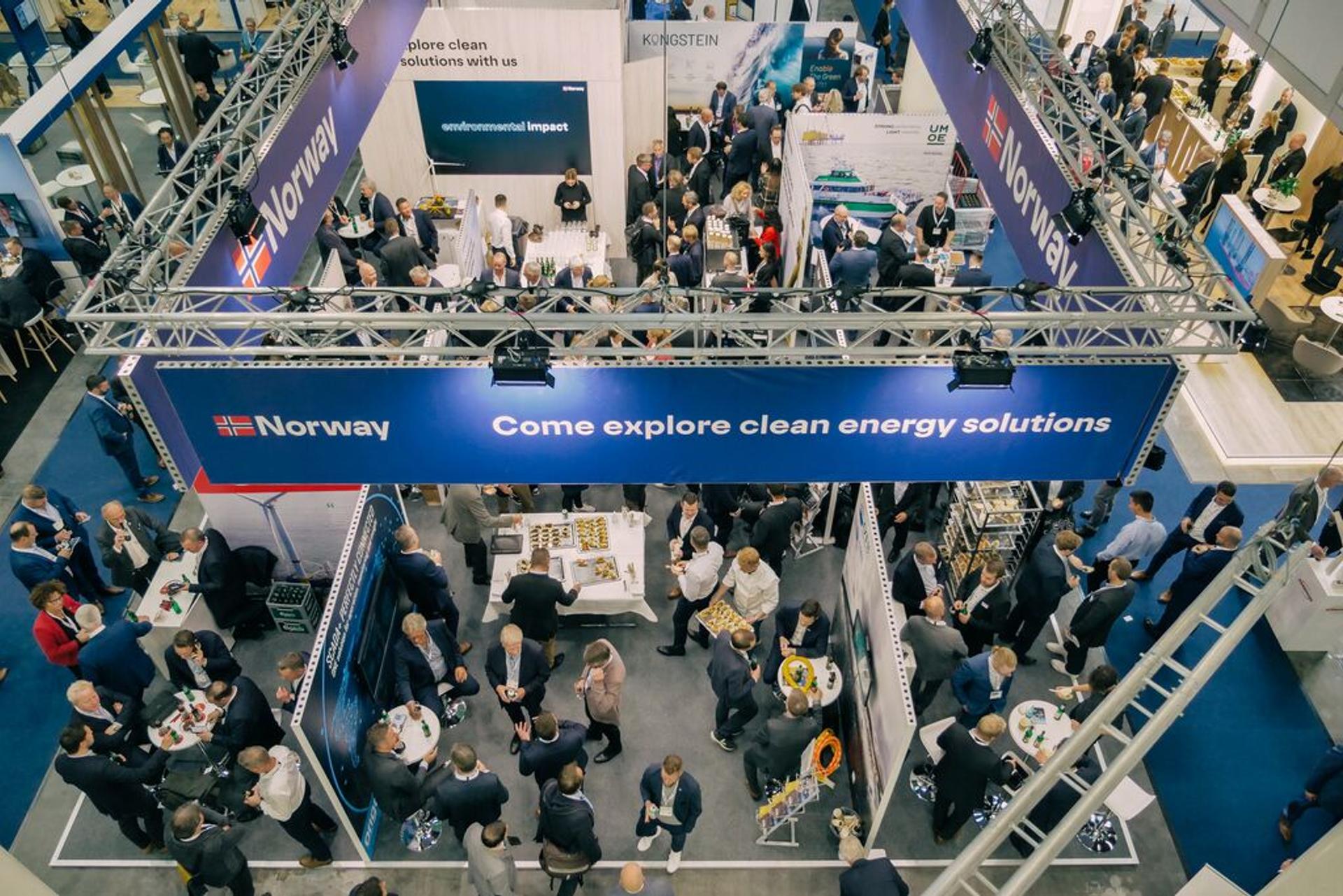Norway is pioneering the future of offshore wind
Published 14 Oct 2022 (updated 7 Feb 2024) · 3 min read
The world's largest test centre for offshore wind energy is located in the North Sea, off the southwestern coast of Norway.
The centre is now increasing its capacity with four new floating wind turbines.
A report by the UK’s Floating Offshore Wind Centre of Excellence concludes that floating offshore wind (FOW) has the potential to play a significant role in achieving global net zero. Norway is one of the countries poised to become a major player in this burgeoning industry.
Norway has decades of experience with delicate and demanding operations in some of the most challenging offshore conditions in the world. This experience is proving invaluable in testing innovative FOW concepts.
Blowing away the competition
Norway is home to Marine Energy Test Centre (METCentre), the world’s leading test centre for offshore wind. In September 2022, METCentre was awarded licences to install four new offshore wind turbines in the North Sea.
"This expansion strengthens Norway's position as an international pioneer in floating offshore wind," says Arvid Nesse, head of METCentre and Norwegian Offshore Wind.
With the new licences in place, a further four turbines will be installed by 2026. This growth will bolster the Norwegian FOW supply chain.
"The expansion of the METCentre is very good news for the Norwegian supply chain. It is not just technology being tested here, but actually, the entire process from planning, logistics, transport, environmental impact, and installation."
- Arvid Nesse, METCentre
Growing by leaps and bounds
As the METCentre sets to expand, the country as a whole is gaining ground in FOW. A recent study by Menon Economics is forecasting floating offshore wind could create 50 000 new jobs in Norway. This growth could potentially give Norway a 14 per cent of the share of the global floating market by 2050.
To achieve this, the industry needs to continue to collaborate on a national level and access its knowledge base. Norwegian Offshore Wind, one of the country’s largest industry bodies, has nearly 400 members that are all focused on innovating and decreasing costs in FOW.
Working together across borders
Countries around the world are making green commitments that are pushing a dramatic expansion in offshore wind from the Pacific to the North Sea and beyond.

METCentre and Norwegian Offshore Wind are inviting the world to share knowledge and drive the growth of the industry together. Norwegian Offshore Wind, together with its partners Innovation Norway and NORWEP have invited 15 companies to join a program focused on offshore wind in Japan.
Global Growth Offshore Wind Japan, is a one year program which brings Norwegian players and Japanese strategic partners together through workshops and seminars to make them ready for market.
Japan is an emerging market for offshore wind. It was listed second in the report from Floating Offshore Wind Centre of Excellence, as a country that has the potential to play a significant role in delivering global zero.
Japanese offshore wind developers are looking for international partners with a strong track record and knowledge of floating offshore wind. Norway plans to deliver on that.
Riding the FOW wave
Norway’s rich history in the North Sea and its proven knowledge of FOW has put the county at the forefront of offshore wind. Offshore power generation has seen tremendous growth during the past decade.
Global capacity has now reached 55 GW, a dramatic increase in the last decade or so, which is only set to increase.
With the focus on floating wind, the locations for future wind farms must be deeper out to sea where the wind is strongest. That is exactly where Norway has invaluable and unique expertise and plenty of potential areas to develop.
